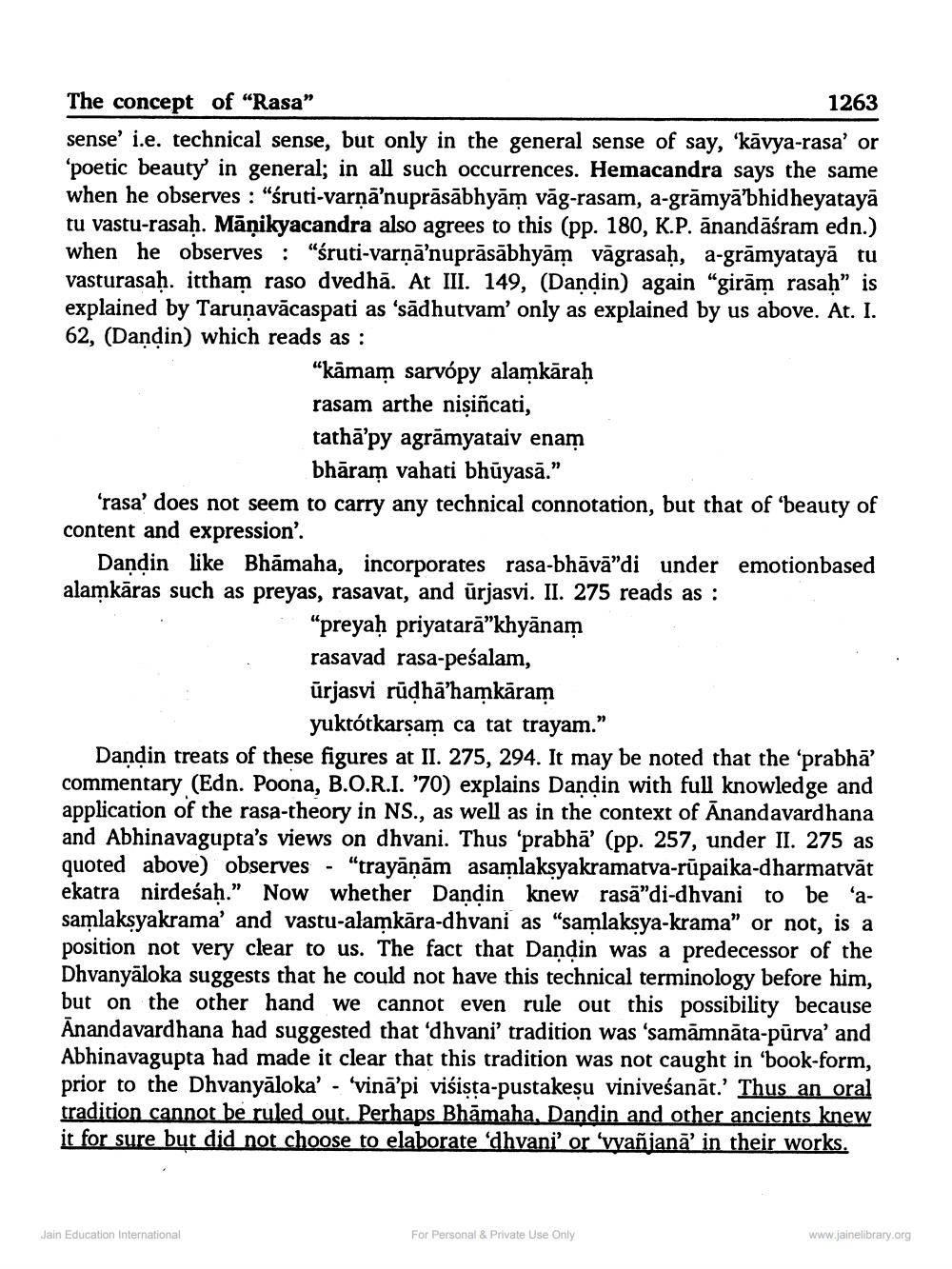________________
The concept of “Rasa”
1263
sense' i.e. technical sense, but only in the general sense of say, 'kāvya-rasa' or 'poetic beauty in general; in all such occurrences. Hemacandra says the same when he observes : "śruti-varņā'nuprāsābhyām vāg-rasam, a-grāmyā'bhidheyatayā tu vastu-rasaḥ. Māņikyacandra also agrees to this (pp. 180, K.P. ānandāśram edn.) when he observes : "śruti-varņā’nuprāsābhyām vāgrasaḥ, a-grāmyatayā tu vasturasah. ittham raso dvedhā. At III. 149, (Dandin) again "girām rasah" is explained by Tarunavācaspati as 'sādhutvam' only as explained by us above. At. I. 62, (Dandin) which reads as :
“kāmam sarvópy alamkāraḥ rasam arthe nișiñcati, tathā'py agrāmyataiv enam
bhāram vahati bhūyasā.” 'rasa' does not seem to carry any technical connotation, but that of beauty of content and expression'.
Dandin like Bhāmaha, incorporates rasa-bhāvā”di under emotionbased alamkāras such as preyas, rasavat, and ürjasvi. II. 275 reads as :
“preyaḥ priyatarā"khyānam rasavad rasa-peśalam, ūrjasvi rūdhā’hamkāram
yukrótkarşam ca tat trayam.” Dandin treats of these figures at II. 275, 294. It may be noted that the 'prabhā commentary (Edn. Poona, B.O.R.I. '70) explains Dandin with full knowledge and application of the rasa-theory in NS., as well as in the context of Anandavardhana and Abhinavagupta's views on dhvani. Thus 'prabhā' (pp. 257, under II. 275 as quoted above) observes - "trayāņām asamlaksyakramatva-rūpaika-dharmatvāt ekatra nirdeśah." Now whether Dandin knew rasā"di-dhvani to be 'asamlaksyakrama and vastu-alamkara-dhvani as "samlaksya-krama” or not, is a position not very clear to us. The fact that Dandin was a predecessor of the Dhvanyaloka suggests that he could not have this technical terminology before him, but on the other hand we cannot even rule out this possibility because Anandavardhana had suggested that 'dhvani' tradition was 'samāmnāta-pūrva' and Abhinavagupta had made it clear that this tradition was not caught in 'book-form, prior to the Dhvanyāloka' - 'vinā'pi viśista-pustakesu viniveśanāt.' Thus an oral tradition cannot be ruled out. Perhaps Bhāmaha. Dandin and other ancients knew it for sure but did not choose to elaborate 'dhvani' or 'vyañjana' in their works.
Jain Education International
For Personal & Private Use Only
www.jainelibrary.org




